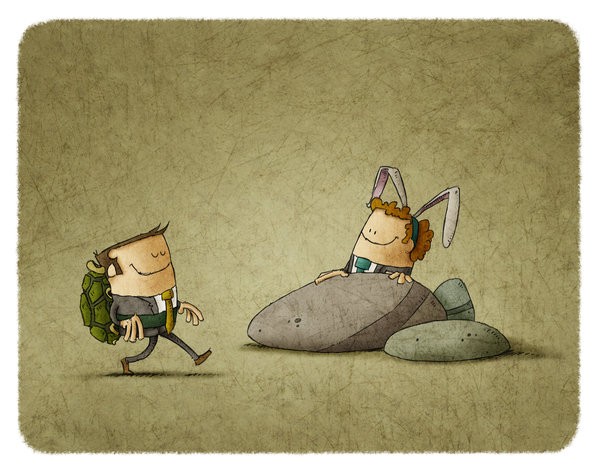No one can deny the innovations and changes that are driving transformation in marketing. Some call it a digital transformation, some a technology transformation, others a customer experience transformation or some simply a transforming of marketing strategy. These changes are leading to a rethink of marketing structure, process and implementation, including what the ideal roster of agencies and suppliers looks like.
But that race to transform can be a challenge, with some taking a considered strategic approach while others rush around trying to find a quick fix.
Late last year, in the pre-holiday rush, we got calls on a Wednesday afternoon from two different marketing teams in two different organisations requiring very similar assistance from two different perspectives but with two very different outcomes.
It is a cautionary tale for marketers everywhere that in our increasingly complex marketing world the fastest solution is often not the best solution.
The Rabbits Problem
The first call was from a team of marketers in a state of high excitement. They said they had an urgent need to restructure their digital operations within their marketing organisation, starting the following week.
They went on to describe a fragmented set of job descriptions across digital marketing, social media, owned media management, content generation and app development, all of which sat outside the rest of the marketing structure and separate from the organisation’s commercial objectives and measures.
They talked about ‘process chaos’ and the fact that their current roster of agencies was being messed around and given little or no guidance as to how to work with the organisation.
We agreed there and then on a methodology and proposal. I also agreed to write a short deck within 24 hours for the team to use in onward presentation to bring the rest of the leadership group on board.
The Tortoise Problem
Compare and contrast with another call we got around the same time. This time it was a larger organisation that wanted to call a pitch as quickly as possible, and needed our help and advice. We duly met with the marketers, and together we explored their reasons for pitching.
It turned out that like many organisations, their marketing strategy and therefore their marketing requirements, communication development processes and team members had all changed substantially over the last few years and that the lead agency was felt to be no longer suited to their needs.
They felt that there had been a series of conversations with the lead agency on their changing needs but acknowledged that the specific changes had not yet been fully articulated or quantified, either internally or to the incumbent agency.
The Rabbit Solution
After I’d supplied the short deck for the Rabbits, we heard nothing for several weeks, despite following up as agreed. Nothing unusual in that of course – as we all know well, businesses make decisions at all sorts of speeds, despite the best of intentions. Eventually we did get a response – that we should connect once again in the New Year.
We then discovered, however, that in the interim the clients had called a pitch anyway, appointed a new agency and all gone on holiday. No structural changes, no process improvement, no definition of marketing requirements – nothing that would indicate that the client team accepted any responsibility for the mess they had created.
Simply a pitch to replace the incumbent agency, the hiring of a shiny new partner to start the year, and a six-month wait before the same hoary old problems come up and the agency can be blamed once again.
The Tortoise Solution
With the Tortoises, the more we discussed the role of the incumbent it became obvious that the agency was still seen as valuable contributor, but that the client team felt unable to manage the transformation beyond making major changes to the roster – even though they acknowledged that a pitch would be disruptive and confronting to the incumbent.
As the conversation developed the marketers, being very open and smart operators, quickly concluded that they needed to get their own house in order and their own expectations defined first before embarking on any pitch – if indeed they did decide to run a pitch at all.
The Rabbit Outcome
Pitches are too easy to simply be a distraction for risk-averse clients who use the process to address their excuse for poor structure, lax process, vaguely articulated marketing requirements and the absence of a roster model. None of those challenges is specially quick or simple to fix (although some of them can be) but that doesn’t mean a pitch is any kind of answer.
There are also, however, too many agencies willing to pitch anything that moves. Every time I hear an agency has pulled out of a pitch because they don’t have faith in the marketer or confidence in the process they go up several notches in my estimation.
Too many agencies carry on in the hope they can change the client once they win the business. It sometimes happens of course, but mostly it doesn’t. More often the agency has to try and renegotiate the remuneration after six months as they find they are burning up resource without result.
Sure, sometimes a pitch is a solution. There are times when a new perspective is required, or the marketer’s requirements have moved beyond the skillsets and specialisms of the incumbent agency. But a pitch should only be held to solve the kind of problem a pitch is capable of solving.
Pitches don’t evolve marketing structures, redesign campaign development processes, articulate proper marketing requirements or create workable roster models. You need marketers to do those things.
We wished the Rabbit team well with their new partnership. We hope it works out – not least for the agency that has taken on the challenge. But as you can tell, we’re not holding our breath.
The Tortoise Outcome
The industry needs more Tortoise clients who take the time to get it right and fewer Rabbits, because when it comes to agency/client relationship performance, there are just too many pitches producing too many short term, Band-Aid solutions.
On a broad look at the market in 2016, I reckoned there were probably twice as many as there should have been. It will no doubt be the same this year too because this short-term distraction will not lead to long term, sustainable transformation.
We’re about to start working with the Tortoise team to help them make a real difference in short order to how they operate in 2017 knowing that it will set them up for years of marketing success.
Our Strategic Supplier Alignment service helps you to untangle your supplier roster, understand its strengths and weaknesses, and develop an optimal structure to improve your performance.
Why do you need this service? Learn more here




